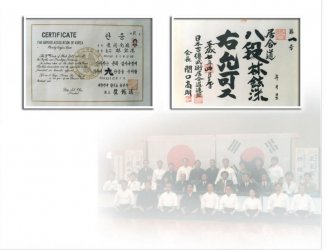mastercole
Master Black Belt
- Joined
- Apr 19, 2011
- Messages
- 1,157
- Reaction score
- 14
I did not realize Hapkido had swords. I guess that came from the Samurai?
This site says this man is possibly the only master of Kuhapdo in the USA. http://www.blackeaglemartialarts.us/about/what-is-kuhapdo/
"Kuhapdo is offered by Black Eagle Martial Arts under the instruction of Master Son Young Gul, possibly the only master of this art in the US today."
This guy might be a top level teacher? http://www.blackeaglemartialarts.us/staff/ They started in 1960 according to their logo.
Anyone ever train with this guy?
This site says this man is possibly the only master of Kuhapdo in the USA. http://www.blackeaglemartialarts.us/about/what-is-kuhapdo/
"Kuhapdo is offered by Black Eagle Martial Arts under the instruction of Master Son Young Gul, possibly the only master of this art in the US today."
This guy might be a top level teacher? http://www.blackeaglemartialarts.us/staff/ They started in 1960 according to their logo.
Anyone ever train with this guy?

